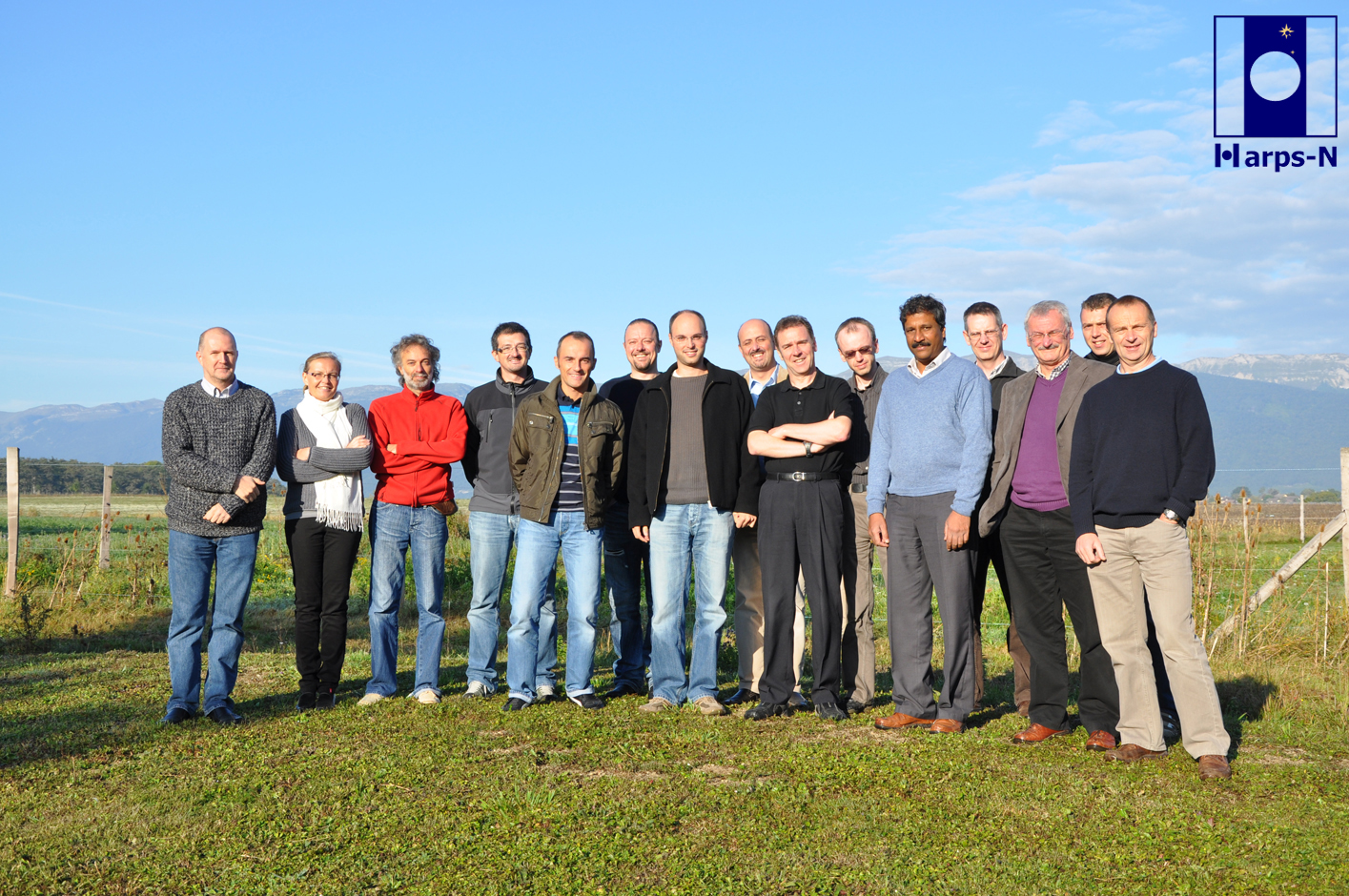Harps-N puts TNG in pole position for exoplanets searching
Hunt for planets outside Solar system is entering a new and promising chapter. At the end of December, an international agreement has been signed by INAF, the Italian National Institute for Astrophysics, to officially launch the project HARPS-N. HARPS-N (High Accuracy Radial velocity Planet Searcher) -- where the ‘N’ stands for Northern hemisphere, the planned location for the instrument – is a precision spectrograph designed to detect and characterize extrasolar planets similar to Earth, both in mass and structure, and for studies of asteroseismology. Harps-N will be installed on TNG (Telescopio Nazionale Galileo), the 3.6 meters INAF telescope hosted by the Roque de Los Muchachos observatory, in the Canary Islands.
“I’m really pleased with this agreement – says Tommaso Maccacaro, President of the National Institute for Astrophysics – because it will allow the Italian astronomical community to access this important and efficient instrument in the exoplanets research field. Furthermore – continues President Maccacaro – INAF, with TNG, is going to play a stronger role in such an important field of research”.
“We have managed to set up – says Francesco Pepe, of the Astronomical Observatory of the University of Geneva and HARPS P.I. – an enthusiastic collaboration among various institutes to build a northern copy of HARPS. We all expect HARPS-N@TNG to be as successful as its southern 'brother'”.
“Unique capabilities of Kepler and HARPS-N – adds the Co P.I. Dave Latham, who represents the US partners (Smithsonian Astrophsyical Observatory, Harvard College Observatory, and Harvard University Origins of Life Initiative) – of finally to provide us with a new understanding of the nature of extra-solar planets”.
HARPS-N is thus going to be the Northern counterpart of Harps, its twin instrument already installed and operating on the 3.6 meters ESO telescope at La Silla, in the Andes of Chile. Actually, thanks to its location above the equator, Harps-N is likely to become Kepler satellite’s best partner in discovering new lands outside the Solar system.
In fact Kepler, NASA's space probe launched in March 2009 to look for earth-like planets, has a hundred of potential candidates located precisely within the Cygnus constellation in the Northern hemisphere. In order to ascertain that these “warnings” are actually produced by planets, astronomers need to record the small perturbations in the motion of stars due to gravitational effects produced by celestial bodies – planets, in this case - orbiting around them. This requires to carry out long and repeated high precision measurements from Earth based telescopes.
For Emilio Molinari, Director of the TNG, “a new gear boosting the capabilities of the Galileo telescope, an opportunity for TNG staff to use our expertise in an international collaboration and a new possibility for Italian astronomers to play a role at the frontier of exoplanet search”.
The Harps-N project is coordinated by an international consortium. The members of the consortium are the Astronomical Observatory of the Geneva University (lead), the National Institute for Astrophysics (Italy), the Harvard Smithsonian Astrophysical Observatory , the Harvard College Observatory and the and Harvard University Origins of Life Initiative in the United States, the Universities of St. Andrews and Edinburgh, the Queens University of Belfast in the UK. The project partners are granted 80 observing nights per year to use HARPS-N coupled to the TNG. Additional HARPS-N observing time will be made available to the Italian astronomical community on a research projects basis: proposal will be evaluated, as usual, by the Time Allocation Committee of TNG. INAF will also be involved in the design, coding and testing of the software for the control and observation of the spectrograph, as well as in the installation, testing, and maintenance of the instrument. HARPS-N is currently under construction in Geneva. Full operating status is scheduled for April 1st, 2012.
HARPS (South) is ESO's High-Accuracy Radial-velocity Planet Searcher. It is currently operated at ESO's 3.6-m telescope at the La Silla-Paranal Observatory, Chile. HARPS belongs to the most successful planet-hunting instruments and holds the world-record in terms of precision in measuring stellar velocities. We refer ESO's web page for more details.
Contacts
- IT TNG - Emilio Molinari, Director, molinari@tng.iac.es
- Gloria Andreuzzi, Outreach, andreuzzi@tng.iac.es
- IT INAF - Francesco Rea, Outreach, francesco.rea@inaf.it
- CH GENEVE - Francesco Pepe, HARPS-N PI, francesco.pepe@unige.ch
- US CFA - Dave Latham, dlatham@cfa.harvard.edu
- UK ST.ANDREWS - Andrew Coller-Cameron, andrew.cameron@st-and.ac.uk

The Harps-N team at the kick-off meeting, held in September 2010 at the Observatoire de Genève.

